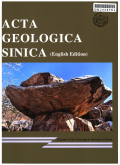- 钛学术文献服务平台 \
- 学术期刊 \
- 基础科学期刊 \
- 天文学、地球科学期刊 \
- 地质学报(英文版)期刊 \
Geothermal-type Lithium Resources in Southern Xizang, China
Geothermal-type Lithium Resources in Southern Xizang, China
基本信息来源于合作网站,原文需代理用户跳转至来源网站获取
摘要:
High-temperature geothermal water has abundant lithium (Li) resources, and research on the development and utilization of geothermal-type lithium resources around the world are increasing. The Qinghai–Tibetan Plateau contains huge geothermal resources; especially, Li-rich geothermal resources in southern Xizang, southwestern China, are widely developed. The Li-rich geothermal spots in Xizang are mainly distributed on both sides and to the south of the Yarlung Zangbo suture zone. Such resources are often found in the intensely active high-temperature Li-rich geothermal fields and, compared with other Li-rich geothermal fields around the world, the Li-rich geothermal fluid in the Xizang Plateau, southern Xizang is characterized by good quality: the highest reported Li concentration is up to 239 mg/L; the Mg/Li ratio is extremely low and ranges from 0.03 to 1.48 for most of the Li-rich geothermal fluid; the Li/TDS value is relatively high and ranges from 0.25–1.14% compared to Zhabuye Li-rich salt lake (0.19%) and Salar de Uyuni (Bolivia) (0.08–0.31%). Continuous discharge has been stable for at least several decades, and some of them reach industrial grades of salt lake brine (32.74 mg/L). In addition, elements such as boron (B), caesium (Cs), and rubidium (Rb) are rich and can be comprehensively utilized. Based on still-incomplete statistics, there are at least 16 large-scale Li-rich hot springs with lithium concentration of 20 mg/L or more. The total discharge of lithium metal is about 4300 tons per year, equivalent to 25,686 tons of lithium carbonate. Drilling data has shown that the depth is promising and there is a lack of volcanism (non-volcanic geothermal system). With a background of the partial-melting lower crust caused by the collision of the Indo-Asia continent and based on a comprehensive analysis of the tectonic background of southern Xizang and previous geological, geophysical, and geothermal research, deep molten magma seems to provide a stable heat source for the high-temperature Li-rich geothermal field. The Li-rich parent geothermal fluid rushes to the surface to form hot springs along the extensively developed tectonic fault zones in southern Xizang; some of the Li-rich fluid flows in to form Li-rich salt lakes. However, most of the Li-rich geothermal fluid is remitted to seasonal rivers and has not been effectively exploited, resulting in great waste. With the continuous advance of lithium extraction technologies in Li-rich geothermal fluid, the lithium resource in geothermal water is promising as a new geothermal type of mineral deposit, which can be effectively exploited. This is the first study to undertake a longitudinal analysis on the characteristics, distribution and scale, origin and utilization prospects of Li-rich geothermal resources in southern Xizang, research that will contribute to a deeper understanding of Li-rich geothermal resources in the area and attract attention to these resources in China.

推荐文章
Age and geochemistry of Early Ordovician A-type granites in the Northeastern Songnen Block, NE China
Early Ordovician
A-type granite
Songnen and Xing'an blocks
Geodynamic setting
Origin of C type adakite magmas in the NE Xing'an block, NE China and tectonic implication
C type adakite
Geochemistry
U-Pb age
Thickened LCC
NE Xing'an block
Comprehensive geochemical/hydrochemical and geo-thermometry analysis of Unai geothermal field, Gujar
Geothermal energy
Hydrochemical
Geochemical
Geothermometery
Renewable energy
Lithium elemental and isotopic disequilibrium in minerals from peridotite xenoliths from Shangzhi, N
Mantle peridotite
Li isotope
Mantle metasomatism
Northeastern China
内容分析
关键词云
关键词热度
相关文献总数
(/次)
(/年)
引文网络
引文网络
二级参考文献 (147)
共引文献 (189)
参考文献 (56)
节点文献
引证文献 (0)
同被引文献 (0)
二级引证文献 (0)
1966(1)
- 参考文献(0)
- 二级参考文献(1)
1970(1)
- 参考文献(1)
- 二级参考文献(0)
1973(1)
- 参考文献(0)
- 二级参考文献(1)
1975(2)
- 参考文献(0)
- 二级参考文献(2)
1977(2)
- 参考文献(1)
- 二级参考文献(1)
1978(1)
- 参考文献(1)
- 二级参考文献(0)
1979(1)
- 参考文献(0)
- 二级参考文献(1)
1981(1)
- 参考文献(1)
- 二级参考文献(0)
1982(1)
- 参考文献(1)
- 二级参考文献(0)
1983(2)
- 参考文献(0)
- 二级参考文献(2)
1984(7)
- 参考文献(1)
- 二级参考文献(6)
1985(5)
- 参考文献(2)
- 二级参考文献(3)
1986(1)
- 参考文献(0)
- 二级参考文献(1)
1987(5)
- 参考文献(1)
- 二级参考文献(4)
1988(1)
- 参考文献(0)
- 二级参考文献(1)
1989(2)
- 参考文献(0)
- 二级参考文献(2)
1990(2)
- 参考文献(0)
- 二级参考文献(2)
1991(2)
- 参考文献(0)
- 二级参考文献(2)
1992(7)
- 参考文献(1)
- 二级参考文献(6)
1993(5)
- 参考文献(0)
- 二级参考文献(5)
1994(2)
- 参考文献(0)
- 二级参考文献(2)
1995(4)
- 参考文献(0)
- 二级参考文献(4)
1996(14)
- 参考文献(2)
- 二级参考文献(12)
1997(7)
- 参考文献(0)
- 二级参考文献(7)
1998(6)
- 参考文献(1)
- 二级参考文献(5)
1999(6)
- 参考文献(1)
- 二级参考文献(5)
2000(9)
- 参考文献(0)
- 二级参考文献(9)
2001(7)
- 参考文献(2)
- 二级参考文献(5)
2002(8)
- 参考文献(1)
- 二级参考文献(7)
2003(7)
- 参考文献(1)
- 二级参考文献(6)
2004(5)
- 参考文献(2)
- 二级参考文献(3)
2005(5)
- 参考文献(1)
- 二级参考文献(4)
2007(3)
- 参考文献(3)
- 二级参考文献(0)
2008(2)
- 参考文献(1)
- 二级参考文献(1)
2009(5)
- 参考文献(4)
- 二级参考文献(1)
2010(1)
- 参考文献(1)
- 二级参考文献(0)
2011(2)
- 参考文献(0)
- 二级参考文献(2)
2012(9)
- 参考文献(6)
- 二级参考文献(3)
2013(3)
- 参考文献(1)
- 二级参考文献(2)
2014(9)
- 参考文献(4)
- 二级参考文献(5)
2015(4)
- 参考文献(0)
- 二级参考文献(4)
2016(10)
- 参考文献(0)
- 二级参考文献(10)
2017(16)
- 参考文献(7)
- 二级参考文献(9)
2018(1)
- 参考文献(1)
- 二级参考文献(0)
2019(8)
- 参考文献(7)
- 二级参考文献(1)
2021(0)
- 参考文献(0)
- 二级参考文献(0)
- 引证文献(0)
- 二级引证文献(0)
引文网络交叉学科
相关学者/机构
期刊影响力
地质学报(英文版)
主办单位:
中国地质学会
出版周期:
双月刊
ISSN:
1000-9515
CN:
11-2001/P
开本:
16开
出版地:
北京复外百万庄26号
邮发代号:
创刊时间:
1922
语种:
eng
出版文献量(篇)
3189
总下载数(次)
0
总被引数(次)
14369
期刊文献
相关文献
推荐文献
- 期刊分类
- 期刊(年)
- 期刊(期)
- 期刊推荐
力学
化学
地球物理学
地质学
基础科学综合
大学学报
天文学
天文学、地球科学
数学
气象学
海洋学
物理学
生物学
生物科学
自然地理学和测绘学
自然科学总论
自然科学理论与方法
资源科学
非线性科学与系统科学
地质学报(英文版)2022
地质学报(英文版)2021
地质学报(英文版)2020
地质学报(英文版)2019
地质学报(英文版)2018
地质学报(英文版)2017
地质学报(英文版)2016
地质学报(英文版)2015
地质学报(英文版)2014
地质学报(英文版)2013
地质学报(英文版)2012
地质学报(英文版)2011
地质学报(英文版)2010
地质学报(英文版)2009
地质学报(英文版)2008
地质学报(英文版)2007
地质学报(英文版)2006
地质学报(英文版)2005
地质学报(英文版)2004
地质学报(英文版)2003
地质学报(英文版)2002
地质学报(英文版)2001
地质学报(英文版)2000
地质学报(英文版)1999

 免费查重
免费查重










